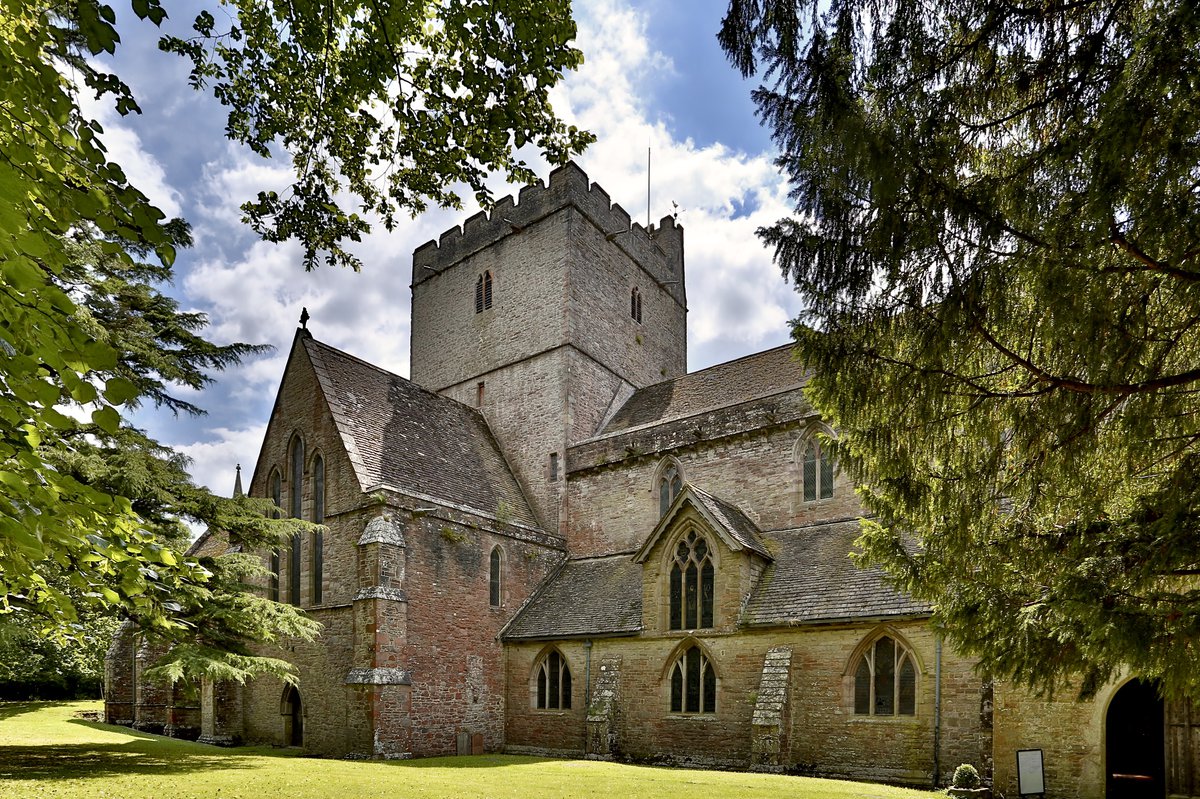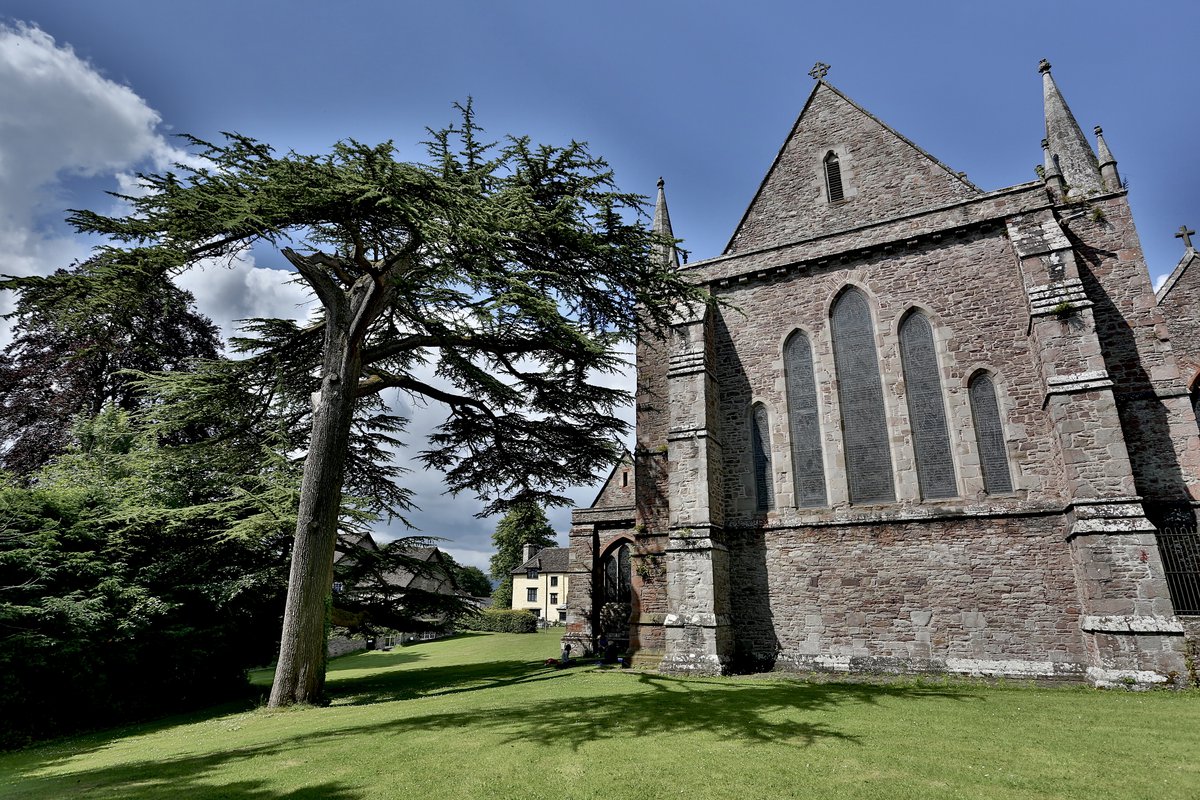Brecon Cathedral Church

Brecon Cathedral was founded originally as a community of Benedictine monks, headed by a prior and following the rule of St Benedict. It was established by Bernard de Neufmarché who was the first of the Norman invaders of Wales. In 1093, Neufmarché defeated Rhys ap Tewdwr, the Welsh King of Brycheiniog, later known as Breconshire. The two symbols of Bernard’s power in Brecon were the castle, a few hundred yards to the south-west, and the Priory.
There was probably a Welsh church on this site before the invasion, but a much larger church was built by about 1150 in the Romanesque, round-arched style favoured by the Normans. Little remains of this building, as the church was almost completely rebuilt in the 13th century in the fashionable Early English style with pointed, rather than round arches. Only the Romanesque baptismal font remains from the Norman church, which can be found inside the cathedral at the west end. The Priory was a pilgrimage destination in the medieval period and its great golden cross set over a huge screen inside the building was regarded as one of the seven great wonders of Wales.
After Henry VIII abolished all the monasteries in England and Wales in the 16th century, the priory church in Brecon continued as the parish church of Brecon. Always recognised as one of the finest churches in Wales, it became in 1923 the cathedral of the new Diocese of Swansea and Brecon, one of the six dioceses of the disestablished Church in Wales.
The Cathedral is built in the shape of a cross running from west to east, with the tower at the centre where the two arms meet. The longer arm to the right of the tower faces west and is where the people came - and still come - to participate in services. Below and beyond the tower is where the monks performed their ceremonies and where today the clergy and choir perform. At the far east end is the high altar. The central tower accommodates the Cathedral’s magnificent set of 10 bells, which are rung regularly for services.
Standing here, we can think on the foundation of the original priory over 900 years ago, but the probability of it being the site of an earlier church means that this could have been a continuous place of Christian worship for around 1500 years.

There are 14 different stories on the trail. You can explore them in any order. Just point your phone camera at the QR code when you spot the Cathedral logo. You can download the trail map here.